I devote this section to the magical and mysterious items I might encounter in my studies.
Click to show recipes
Click to hide recipes
By encrusting an Enchanted Book with Charged Amethyst and Edified Wood, it traps media within the pages like an echo chamber. I can then introduce up to 512 pattern-to-pattern-list bindings for the Grimoire to keep bouncing endlessly inside.
When I cast a pattern that has been associated with a list using my Staff with the Grimoire in my inventory or my Ender Chest, Nature pretends I had drawn the full list, allowing me to create shortcuts for common mantras or large patterns. The Grimoire can even overwrite Nature's patterns.
If there's a book that you want to read, but it hasn't been written yet, then you must write it.
Write Grimoire (pattern, list →)
Associates a pattern to a list of patterns in the Grimoire in my offhand.
Erase Grimoire (pattern →)
Erases any associations for a pattern that may exist in the Grimoire in my offhand.
Archivist Reflection (→ list of patterns)
Gets a list of all patterns modified by the Grimoire in my offhand.
A Scarab Beetle is an amulet that can intercept patterns rejected by Nature.
When activated and in my inventory or Ender Chest, whenever a Hex connected to my person casts a pattern that has no meaning to Nature, it prevents the mishap and casts its own Hex.
Whatever. Go my scarab.
Click to show recipes
Click to hide recipes
I can instruct my scarab how to judge these "illegal" patterns and how to replace it with a different set of patterns instead. This allows me to make new patterns that work seamlessly for only me, even in casting devices.
I can teach them a Hex to use by using Scribe's Gambit. I can see their learned Hex by hovering over them, but it can not be read with Scribe's Reflection. I can reteach them at any time.
When an illegal pattern is cast, it is pushed to the stack as an iota rather than mishapping. The Scarab then casts its learned Hex, and the remainder of the original Hex continues.
Scarabs essentially allow me to create my own patterns that work seamlessly in my Staff or the casting devices I wield.
I shall find these patterns concerning the meta-manipulation of patterns useful if I want to implement advanced processing. I could theoretically create entire infinite families of patterns, similar to the number literals and Bookkeeper's Gambits.
I can infuse Scrolls with a bit of media to create Animated Scrolls that move and writhe like the patterns I draw with my Staff.
The scroll can accept a lone pattern iota or a whole list of patterns.
You can't be a proper writer without a touch of madness, can you?
Small Animated Scroll
Click to show recipes
Click to hide recipes


Costs 1.0 dust
For a list of patterns, it displays one at a time and changes once per second. Two with the same content automatically sync up.
Medium Animated Scroll
Click to show recipes
Click to hide recipes


Costs 1.0 dust
I can read and write to these scrolls remotely using Chronicler's Purification and Chronicler's Gambit respectively.
Large Animated Scroll
Click to show recipes
Click to hide recipes


Costs 1.0 dust
There exists a collection of spells can alter Animated Scrolls. I have documented them on the following pages.
I can weave Amethyst into any ordinary rug to create this wonderfully comfy rug. Stepping on the carpet, I can feel the media coursing under my feet. It feels disorienting but surprisingly puts me at peace.
I feel very inspired, as if I were wearing a Scrying Lens although weaker. My Hexcasting vision seems to have been expanded.
Click to show recipes
Click to hide recipes
Why is the red carpet red? It can be any color.
When ignited for the first time, either magically or with a Flint and Steel, these delightful little candles have pale white flames. Their flames change to copy the Pigment of anyone who interacts with them. I can also give them a Pigment item directly to change its color.
To extinguish, sneak use.
Click to show recipes
Click to hide recipes
Like with regular Candles, I can place them on Cakes as well.
The doctor found himself in an immense cave lined with countless quivering candles, each representing the duration of a life.
I can melt down all my Amethyst in this little jar! Unfortunately, the glass is too thick for me to draw media through it, although I have read tales that ancient Hexcasters were able to solve this issue and were able to bottle up liquid media in some kind of flask to use in their Hexes. However, this Media Jar also has some fascinating properties for recycling media.
Click to show recipes
Click to hide recipes
There, sure enough, she saw the faint translucent outline of something aboout the size of a hen's egg. There was just a touch of color in it, a pale sea-green, soft and shimmering and very beautiful.
I can dunk items into the Jar to fill or imbue it with media. Items not designed for the containment of media are vulnerable to seepage, allowing the media to soak in and transmute the item in a variety of unpredictable and surprising ways.
This can be done in-world by using an item on the Jar, in my inventory just like a Bundle, a Hopper to insert and extract items, or the Hopper spell.
Make Gold
Click to show recipes
Click to hide recipes


Costs 5.0 dust
Transmutes copper ingots to gold. An alchemist's dreams.
Sadden Obsidian
Click to show recipes
Click to hide recipes


Costs 5.0 dust
Infuses Obsidian with media which leaks out of it, giving it a distinctive crying appearance.
Calm Obsidian
Click to show recipes
Click to hide recipes


Yields 2.0 dust
Returns the media from Crying Obsidian.
Therapy! :D
Weave Thought-Knot
Click to show recipes
Click to hide recipes


Costs 0.75 dust
Crafts Thought-Knots by submerging String in a large volume of media rather than brushing an Amethyst Dust on it. A slightly more efficient recipe.
Release Memory
Click to show recipes
Click to hide recipes


Yields 0.5 dust
Sucks the media out of a Thought-Knot. Loses media compared to the crafting recipe, but useful for recycling the little bit of media.
Coal
Click to show recipes
Click to hide recipes


Costs 0.5 dust
Transforms Charcoal into Coal by infusing thought into it and then immediately killing it. Good for compacting.
Charcoal
Click to show recipes
Click to hide recipes


Yields 0.25 dust
Transforms Coal into Charcoal. Why?
Hexcasting is an Art just waiting for me to lose track of my casting and Nature is all too ready to punish my carelessness the moment it happens.
Fortunately, Nature also provides a method for me to reflect on my folly... only after suffering the consequences of them, of course.
Click to show recipes
Click to hide recipes
They call it the Error Media Log. I simply stab a shard of Amethyst through an Edified Log and for some reason, Nature is now ready to spill my errors straight into my mind.
The Media Log will only capture mistakes cast by my Staff and the casting devices I use.
By holding it tightly and meditating on it, it reveals to me the last handful of patterns cast sequentially (even by other patterns, all flattened out into a linear stream), the mishap that occured, and the top few iotas of the stack right before mishap.
I could hypothetically use it as a method of examining the contents of a casting device after casting it, although the short backlog of patterns makes getting a complete Hex out of anything but the simplest items impossible.
Now you may only see a pile of receipts, but I see a story. I can see where this story is going. It does not look good.
Click to show recipes
Click to hide recipes
Once I have recovered some Periwinkles, I can string the flowers into a Lei! The Lei provides a few boons reminiscent of the Scrying Lens, although noticeably weaker.
When worn, the naturally calming abilities of Periwinkles helps to ward off my fall into madness. This is most noticeable in that it prevents Nature from claiming my life as payment for Hexes.
A Lei can be placed on another person who is not wearing a helmet. Hexcasters did this as a sign of endearment and affection due to the Lei's protective abilities, as well as the effort of obtaining the flowers.
There is an long-extinct species of flowers called Periwinkles. In addition to looking pretty, they have great calming abilities; ancient Hexcasters used them to cope with the great horrors that comes with the Art.
A special flower for a special person.
Induce Digging (entity →)
Fortunately, the Art of Hexcasting is a versatile one and provides the means to bring back near anything.
I believe that there is a certain creature capable of sniffing out these flowers. I can cast the previous spell on these Sniffers to compel them to immediately drop down and unearth these flowers for me.
Such a perversion of free will comes at a cost, around three Charged Amethyst. There may also be the occasional harmless mental error; I am not infallible after all, especially working with something as complex as the mind.
Some magic must be at play here: Sniffers can dig up Periwinkles from any block at all, even inorganic ones or ones orginating from other planes of reality.
I imagine that the spell doesn't just "ask" the Sniffer to find the flowers; it conjures them. It fishes around in the brain for the memory of Periwinkle and from that, it receives a template which it instantiates and allows the Sniffer to dig up. And if it can do it, so can I.
Plushies
The ancient Hexcasters have created these delightful Plushies! They seem to be references to some of the patterns I use in Hexcasting. I'm not sure if they do anything, but they are a lovely little collector's item.
The occasional wandering merchant might have picked up one or two during their travels.
This one looks slightly deranged. I feel slightly anxious having it in my inventory.
This one seems to sleeping. I feel strangely assured with it on me, as if it were watching over me.
This one seems to stare directly at me no matter where I put it. What have you seen, great Irissy?
This one might have been made by a bad craftsman. It's not even on a hexagonal grid!
... I'm starting to think these were made intentionally.
The detail on this plushie is unnaturally good. Flexxy must have been quite the idol for this much effort to be poured into its effigy.
These Potions let me forget some of the eldritch knowledge Hexcasting provides. A base dose removes my ability to trade my own life for media, useful if I do not want to be carried off from a mere miscalculation. Higher potencies remove the ability to cast great spells entirely, possibly useful as an offensive tool.
It is unseen.
I can brew one by boiling a Periwinkle into a simple Awkward Potion. Glowstone Dust and Redstone Dust have their standard amplifying and lengthening effects, as with most potions.
The Lodestone inside seems to make this block and the entities shoved in it always within my Hexes' ambit, although I prefer to believe the Wool invites my Sentinel. Cats seem to find it cozy too, like a lit furnace or a bed.
I hear rumors of ancient Hexcasters using this as some kind of iota storage from any range but I struggle to imagine how.
Click to show recipes
Click to hide recipes
A comfy bed for my sentinel, it always seems eager to return to it.
Curios are decorative items created by whittling a piece of Charged Amethyst inside a Stonecutter.
They have an odd interaction with the Charm spell; after being charmed, being deprived of that charm via the Discharm spell or using up the media causes the Curio to shatter.
Based off rumors of a mineral called bismuth that tends into these geometric formations. I have yet to encounter it but I was able to replicate its supposed shape.
I don't believe that such an shape would emerge naturally but Nature delights in surprising me.
A four-leaved clover, based off a universal symbol of good luck. I can't imagine why four is the number that compels Nature to bless the holder with luck, if anything it should be six, but I have dutifully copied its appearance. I wonder if that superstitution still applies when it's carved out of a crystal.
A Compass. If the Charm Hex leaves a vector on top of the stack, the compass needle immediately swings to face the vector.
This even works in places with inconsistent spatial rules that scramble ordinary Compasses. I can also read it to get a unit vector.
An intricate seashell. When held close to the ear, I can make out the sound of ambient media; it sounds like waves on a beach.
Perhaps not thinking about it too deeply is the only thing stopping me from drowning in it. It feels like swimming through honey.
A boring, but classic simple cube. I live in a world of blocks, it is only fair to depict one.
A musical instrument. I can play it by looking up or down and using it.
If the Charm Hex leaves a number on top of the stack, the Curio will play a single note after use; the same note created by Make Note imitating a flute with the number as the second argument.
A small, quaint handbell that produces two short chimes when shaken. Branded with the symbol of a deity.
Historically, bells such as these have been used to call for assistance and summon helpers. I will need to charm it to conjure my own helpers.
Ancient Hexcasters often made Curios of this shape to communicate their adoration for each other.
I can feel it beat slightly in my hands despite being made of an inert crystal.. perhaps it is because I imagine that it should beat.
A pair of rings that I have intricately carved to be separate but interlocked and impossible to separate without breaking one of the rings.
To invoke its charm, I grab both rings and yank, slamming them against each other.
A caricature of a key. It does not fit any lock that I know of and lacks the parts to even work with a standard lock.
Perhaps I have to be the one to make a lock that fits the key instead of the other way around.
A very polished staff, somehow formed from a single crystal. I can not use it like a regular Staff sadly. When charmed, it produces audible wooshes of media.
I wonder if a Staff constructed of Amethyst would consume itself when I try to cast a Hex.
A cutting of a raw crystal into a generic gemstone shape that for some reason raises its perceived value tremendously.
Regrettably, it is too big and Amethyst is too cloudy of a material for it to have the radiance I was expecting. Perhaps perfection is boring.
A distortion of the Charm Curio, with deliberate overcutting and the introduction of protrusions.
Oddly enough, all the edges and sharp corners and knobs give it a much more vibrant and intricate play of light than the Charm Curio.
A small and dense bead of Amethyst. I have made it by sanding off much of the crystal it came from and compressing until I had produced a small, near-perfectly spherical object.
Like its concept, despite being small, it carries a great deal of weight.
As the opposition to the Beauty Curio and representing the abstract concept of truth, this Curio is sharper and multifacted, resembling a teardrop. I have cut it in an odd polarizing way such that each of the four quadrants along the gem catch the light in a slightly different way.
An upwards facing arrow. Cut in such a way that the center of balance faces downwards, making the item swing to face upwards at all times.
This design is often used by Hexcasters to express approval.
A downwards facing arrow. The cutting is slightly altered to be distinct from just holding the Up Curio upside down, letting it catch the light in a slightly different angle and always face down instead.
This design is often used by Hexcasters to express disapproval.
A Pedestal can keep an item suspended safely for me. Unlike an Item Frame or a Chest though, my Hexes can still interact with the item as though it were just dropped on the floor. An empty Pedestal can pull items near it and it interacts with Hoppers about how I would expect. It works even if the item is swapped out.
Click to show recipes
Click to hide recipes
A pedestal is as much a prison as any small, confined space.
Patterns and actions that perform a magical effect on the world.
The blocks from Conjure Block last forever, are consequently a pain to clean up, and are not too versatile. Luckily, Nature offers an elegant and flexible alternative. These Mage Blocks come with a suite of modifiers. I could even stack multiple modifiers on one block and analyze its composition with a Scrying Lens.
Conjure Mage Block (vector →)
Conjures a Mage Blocks at the location. Costs about three Amethyst Dust.
I can create a city out of nothing, or I can cover it in volcanic rock.
Reset Mage Block (vector →)
Conjures a Mage Blocks at the location. Costs about three Amethyst Dust.
I can create a city out of nothing, or I can cover it in volcanic rock.
Bouncy (vector →)
Makes the block bouncy, like a Slime Block. Bounces me regardless of whether I am sneaking. Delightfully fun!
Energized (vector, number →)
Sets the Redstone power outputted by this Mage Block.
Ephemeral (vector, number →)
Sets the duration after which a Mage Block will spontaneously disappear.
Volatile (vector →)
Breaking volatile Mage Blocks shatters others it is touching. This can cascade until every connected volatile block shatters.
Rotation is done via with stationary teleportation at a different orientation. The sudden perspective change is already highly disorienting; the floor leaving your feet only to be shoved back onto it again is more so.
For this reason, Nature abhors entity rotation... or perhaps it trivializes Nature's carefully constructed schemes.
Rotate Block (vector, vector →)
Rotates a block to face a certain vector direction. Requires a rotatable block. Costs about an eighth of an Amethyst Dust.
Rotate Entity (entity, number, number →)
Rotates an entity by a given change in pitch and yaw, expressed in radians.
Nature seems to be against entity rotation. Rather than a straightforward vector, Nature demands measurements in radians by which to turn horizontally and vertically.
The cost is strange and multilayered too. Free if cast on myself, about half of an Amethyst Dust for other entities, and the natural aura of media surrounding a person elevates the cost to about a whole Charged Amethyst.
Using precise manipulation of media, I can magically etch my signature onto any item! It must be done with my Staff as proof of intentionality.
An autographed item proudly displays every autographer's name in shimmering Pigment.
I disagree strongly with whatever work this quote is attached to.
Autograph
Autographs the item in my offhand with my name and Pigment. Autographing an item with my name already on it moves my name to the top of the list.
Because an autograph is strongly imprinted on an item, Erase Item is insufficient to remove it; a specialized spell is required to extripate autographs.
However, a spell capable of doing by its very nature will also destroy a Focus's contents or a casting device's Hex and media. Perhaps that is for the better—my autographed Hexcasting gifts can be uniquely assured to be untampered.
Unautograph
A more destructive form of Erase Item, capable of burning off autographs. Costs about one Amethyst Dust similar to Erase Item.
Authenticator's Dstl. (item stack, entity → boolean)
Pushes whether a given person has signed a given item stack.
The dye spell and its specialized iota allows me to alter the color of blocks and entities. The dye iota represents a color, but also seems to represent the potential to be colored. For example, attempting to get the dye of grass returns Null but getting the dye of undyed terracotta returns uncolored, which I can use to "bleach" dyeable blocks.
Chromatic Purification (id/vector/entity → dye/null)
Gets the dye of a block, entity, or block/item identifier.
Dye (vector/entity, dye →)
Dyes a dyeable block or entity. Costs about an eighth of one Amethyst Dust.
The valid block targets for this spell include beds, candles, cakes with candles, carpets, concrete, concrete powder, glazed terracotta, sand into red sand and vice versa, sandstone and all blocks derived from it into its red variant and vice versa, shulker boxes, stained glass, stained glass panes, terracotta, tulips into their multiple colors, and wool blocks. As for entities, cat collars, dog collars, specklikes, shulkers, and item entities of all of the above blocks are valid.
Vision Purification (dye → vector)
Translates a dye color into a vector, where each component is from 0 to 1 and represents the red, green, and blueness of the dye respectively.
Magic Missile (vector, vector →)
Conjures a small silver of amethyst that always deals a full heart of damage and forces the target backwards. Costs about one Amethyst Dust.
The projectile has a few interesting properties. It automatically disappears after roughly ten seconds or shatters upon hitting an entity or block. It pierces all forms of armor and protection. It is also unaffected by gravity and water drag.
A weak but enchanting sparkling projectile.
The first vector is conjuration location and is quite esoteric: no wonder most Hexcasters conjure it in front of them. The basic gist is a vector, where my head's position is the origin, my facing is the Z+ axis, the vector pointing up from my head is the Y+ axis, and the vector from my head pointing rightwards is the X+ axis. For basic purposes, the zero vector conjures it inside my head and a vector resembling (0, 0, n) conjures it n blocks in front of me.
The second vector is velocity and thankfully much less complicated. It is a simple offset vector, similar to the one that Impulse takes in. Unlike Impulse though, this vector can be of arbitrary magnitude without incurring additional costs.
Unlike Arrows though, Magic Missiles will not increase in damage simply by travelling faster. They also apply an odd knockback effect that ignores the entity's mass or the projectile's speed.
Like how I can manipulate dyes with Hexcasting, I can also manipulate pigments. I can even store multiple of them and have my Hexes randomly choose one to me.
Pigment Purification (dye/entity → pigment)
Takes a colored dye iota and transforms it into a pigment, takes a person and returns their pigment, or takes an item containing a pigment and returns its pigment.
Pigment Exaltation (pigment, vec, num → vec)
Samples the pigment at a certain place and time as a vector, where each component is from 0 to 1 and represents the red, green, and blueness respectively.
Internalize Pigment II (pigment →)
Internalizes a pigment iota.
Rather than a specific effect, this spell performs dozens of minor magical feats. It interacts with a vast array of blocks and entities, and I always discovering new applications for it.
Notes simply describes it as "do magic"; the general rule of thumb is any small effect a wizard can effortlessly will into existence, this spell can replicate.
Prestidigitation (entity/vector →)
Causes a small magical effect, not too distinct from the original nature or function of the target. Costs about a tenth of one Amethyst Dust.
I've compiled all of its recorded uses but there is no guarantee all have been found: opens and closes fence gates, trapdoors, and doors of any materials; flicks levers and presses buttons; holds down and releases pressure plates; extinguishes fires of all kinds; lights and extinguishes candles, candle cakes, and campfires; ignites soul fire on blocks that support it; rings bells; strips wood; carves pumpkins; makes a note block play its sound; dries mud into clay; toggles Redstone lamps;
triggers dispensers and droppers; turns most soil blocks into path blocks and path blocks into tilled soil; drain cauldrons; modifies the state of Redstone repeaters, comparators, and daylight sensors; ignites and deprimes TNT and creepers; shears sheep; toggles armor stand arms; squirts squid; makes pandas sneeze; removes the helmet of a snow golem; inflates pufferfish; takes honeycomb from beehives and nests, and activates some grand Hexcasting work.
I can perform the standard magic trick of vanishing an item and bringing it back. The item hides in the wristpocket, where I can use media to manipulate it. The wristpocketed item stays with me even after death and I can recall it once I can cast again.
Because making something disappear isn't enough; you have to bring it back.
Wristpocket
This spell vanishes the stack of items in my other hand, or conjures it back, swapping if my other hand is holding something. Costs about a eighth of one Amethyst Dust.
While the items disappear from reality in almost all measurable aspects, certain items' effects can still function even when hidden in the wristpocket.
I hear of certain Totems that still function within the wristpocket. Phials also can still provide for my Hexes within the wristpocket.
Wristpocket Reflection (→ item)
Returns the item in my wristpocket, or Null if it is empty.
Sleight (item entity/vector →)
Performs an act of magical sleight of hand to steal items into my wristpocket or expel my wristpocket back into the world. Costs about a fourth of one Amethyst Dust.
If given a vector, it conjures my wristpocketed item at that vector. If given an item entity, my wristpocket either pulls in or swaps with the item, depending on whether it is empty.
If your sleight of hand causes you to break eye contact with your audience, it is too advanced for your skill level.
Mage Hand (entity/vector →)
Projects my mind's hand forward to use my wristpocketed item and interact with the world. If my wristpocket is empty, acts as though a plain hand had reached out. Costs about one Amethyst Dust.
If given an entity, it interacts with the entity using the wristpocketed item. If given a vector, it interacts with the block or space with the item.
Because it only brings forth a mind's hand, it is still tied to me and will not work for casting methods not attached to a person. I can however use it to open Chests.
A spectral, floating hand appears at a point you choose within range.
Mage Mouth
Makes me eat my wristpocketed item, nourishing me or applying potions to me. Costs about one Amethyst Dust and mishaps if the item is not edible.
Regardless of the time required to usually eat the item, its special effects, my own dietary restrictions, cooldowns on eating the item, or if I'm full, this spell makes me consume it instantly.
Let food be thy medicine and medicine be thy food.
I can conjure an image of an iota into the world, called a speck. Nature allows me to customize them quite extensively, altering their size, thickness of stroke, and more. They also take on my pigment color. Once they are in the world, I can move, rotate, and otherwise alter them for free, regardless of range.
Conjure Speck (any, vector, vector → entity)
Conjures a speck with the iota, position, and rotation. Costs a negligible amount of media. Pushes the speck iota to the stack.
Move Speck (speck entity, vector →)
Moves a speck entity to the position.
Rotate Speck (speck entity, vector →)
Rotates a speck entity to face the vector.
Roll Speck (speck entity, number →)
Accepts a number between 0 and 1, representing a fraction of a full rotation, and rotates the speck's image by that amount.
Alter Speck (speck entity, any →)
Changes the speck's iota.
Time Speck (speck entity, number →)
Commands the speck to disappear after that many twentieths of a second.
Resize Speck (speck entity, number →)
Scales the speck, can range from 0 to 10. Represents size in blocks and is zero by default.
Thicken Speck (speck entity, number →)
Changes the stroke thickness of a pattern speck, can range from 0 to 10. Represents twentieths of a block, and is zero by default.
Paint Speck (speck entity, pigment →)
Splashes a pigment iota onto the speck, changing its color after creation.
Dismiss Speck (speck entity →)
Forces a speck to disappear.
Zone Dstl.: Specklike (vector, number → list of entities)
Returns specks similarly to other zone distillation patterns.
Confetti (vector, number/vector →)
Creates a loud bang similar to that of Fireworks and a burst of colorful particles, either in a direction or in a radial blast. Costs about half of one Amethyst Dust.
The particles are harmless and flutter through the air for quite long until they reach the ground. The first vector is a position and the second controls direction. If it is a number, it indicates speed to explode in in all directions; a vector makes the particles tend towards the given direction. Both the number and the vector's magnitude may not exceed 2.
The rest is confetti.
Vibrate (vector, entity/vector, number →)
Causes a visible pulse of vibration from a vector to an entity or vector over a number of seconds. Costs about a sixteenth of one Amethyst Dust.
The effect, while resembling the pulses produced by Sculk Sensors, is entirely distinct. It is a purely visual effect.
The duration can range anywhere from zero seconds to ten seconds.
If a tree falls in a forest and no one is around to hear it, does it make a sound?
Sparkle (vector, vector, number →)
Produces a small sparkling particle of my desired position, color, and lifespan. Costs a negligible amount of media.
The first vector controls position and the second vector controls color. Each component should range from 0 to 1 and corresponds to red, green, and blueness respectively. The final number dictates how long the sparkle should remain in twentieths of a second, up to five seconds.
All that glitters is not gold.
Crack Device
Cracks the unprogrammed casting device or Curio in my offhand. Cracked casting devices proudly display their Hexes. Costs about one Charged Amethyst.
This spell will blind me for a quite a duration if I attempt to expose the innerworkings of an already-written device. For a moment though, I believe I had glimpsed the Hex before my eyes and brain filled with media.
Nowadays time runs by electricity and vibrating crystals of quarts and goodness know what else..
- clearly a reference to Amethyst.
Illuminate (vector, number →)
Conjures a completely invisible light with illumination strength of my choosing at a location. Costs about a quarter of an Amethyst Dust.
The block that it is into must be empty or extremely weak. The illumination strength can be a number between 1 and 15, inclusive. If I target a space where a light already exists, the spell is free and particleless.
By holding a Scrying Lens, I can see the lights and place a block in their place to remove them.
The light blinds us. It is only in the dark that we see clearly.
Gasp (entity →)
Instantly replenishes a creature's air bubbles. Costs about one Amethyst Dust.
Regardless of amount of breath restored, this spell costs exactly the same so I should wait as long as I safely can before casting this spell. I will find it useful while diving, being teleported into a block, or even keeping sea creatures alive on land.
The best way to observe a fish is to become a fish.
Squawk (vector, identifier →)
Emits a sound associated with a mob near a location, as though a parrot had imitated that mob. Costs about a half of an Amethyst Dust.
This spell does nothing but still consumes my media if a parrot can not replicate the sound.
I can already imagine this spell's use for playing practical jokes on my friends and enemies. Perhaps Nature does permit me to have fun occasionally with my Hexes.
Hisss...
While conjuring projectiles from pure media manipulation should be prohibitively expensive, Nature offers a set of cheaper spells to create certain projectiles.
These spells push the conjured entity to the stack, which I must manually propel in my desired direction.
Can I offer you a nice egg in this trying time?
Conjure Egg (vector → entity)
Conjures an egg. May be fertile. Costs about two Amethyst Dust.
Conjure Spit (vector → entity)
Conjures a sticky low-damaging projectile. Costs about a fourth of one Amethyst Dust.
Conjure Snowball (vector → entity)
Conjures a harmless snowball. Costs about half of an Amethyst Dust.
Conjure Fireball (vector → entity)
Conjures an explosive fireball that can be percussively propelled. Costs about three Amethyst Dust.
There exist other spells too complex to be given justice in this chapter—I have dedicated other chapters to them.
Magic Missile is a standard quick and versatile spear of amethyst that can be produced and fired at arbitrary speed.
I can also utilize fireworks for battle.
Finally, a certain spell allows the ability to fire potions and arrows.
Extract Block (vector, number →)
Targets structural faults in a block, resulting in a higher yield. Costs about one, three, and five Amethyst Dust when power input is 0, 1, and 2 respectively.
Collect Block (vector →)
Breaks a block gently, perserving the block better than standard mining. Costs about half of an Amethyst Dust.
Ancient Hexcasters seem to have devised spells to conjure a multitude of items, to both further their Art and to convenience their collaboration. I can only link these items together by their being vaguely edible.
What nicer thing can you do for somebody than make them breakfast?
Hex Gummy (vector →)
Conjures a Hex Gummy: a delightful light snack that also provides about a tenth of an Amethyst Dust's worth of media. Costs about one Amethyst Dust.
Conjure Hexburst (vector, any →)
Conjures a Hexburst of the given iota at the location. Costs about one Amethyst Dust and is subject to the Transgress Others mishap.
Hexbursts are edible items created by taking an iota and wrapping media around it, over and over until it gains size. When eaten, a Hexburst instantly adds its iota to the consumer's stack. I shall find this property considerably useful if I ever want to trade my entity reference. Should my stack have an unclosed Introspection, it pushes it into the forming list.
Conjure Hextito (vector, list of patterns →)
Conjures a Hextito of the given Hex at the location. Costs about two Amethyst Dust and is subject to the Transgress Others mishap.
Hextitos are triangular crunchy snacks I can conjure. When consumed, the consumer immediately casts its Hex, using their Staff's stack unlike a regular casting device. I shall find them useful to make simple actions like raycasts or to give out limited uses of a Hex I have designed. If a consumer's stack has an unclosed Introspection, it will not cast, making it quite safe to hand out.
I hear rumors of a sorcerer illager that can summon fangs from the ground. While I find it hard to believe that villagers can shift media, I have taken inspiration from those myths and created this spell that brings forth spikes from the ground to skewer targets.
Conjure Spike (vector, vector, number →)
Takes a non-air position, an axis vector, and a delay in seconds up to ten seconds long and conjures a spike at that location. Costs about one Amethyst Dust.
Each spike takes about a half second to strike and deal a hefty three full hearts of damage before slowly sinking back into the ground. If I cast this spell where a spike has not yet disappeared, it will do nothing. Spikes will also throw back targets in the direction they were conjured.
The Art of Hexcasting is a versatile craft; I can use media to simulate a lot of the actions that I rely on blocks to perform without requiring any physical infrastructure. With just my staff, I can cut stone into stairs, launch arrows, and cook my items for me.
Tales speak of ancient Hexcasters that have set up entire magical factories without placing a single block.
And I need a bigger office, I need a bigger chair
A bigger desk, a bigger staff
A bigger hat to wear
Push (vector, vector →)
Takes a block position and an axis vector and pushes the block along that vector. Costs an eighth of an Amethyst Dust.
Similar to the block it is mimicking, this spell can push chains of up to 12 blocks if needed and break fragile blocks that a regular Piston would break. It also respects the stickiness of blocks like Slime and Honey, as well as the immovability of certain blocks like Obsidian.
Dispense (item entity, vector, vector →)
Takes an item entity, a position, and an axis vector and dispenses the item. For most applications, costs about half of one Amethyst Dust.
More specifically, this spell acts as though a dispenser suddenly appears with the item loaded and fires the dispenser.
If this spell is used for any type of Arrow, the price increases to a full Charged Amethyst. I wonder why Nature would have such an adverse reaction to this specific application. Perhaps I would be too powerful?
Upon request, I can also perform a hug.
Cook (item entity →)
Takes an item entity and cooks it as if in a Furnace. Costs about one Amethyst Dust for every ten seconds that the Furnace would need to have been active.
Roast (item entity →)
A specialized variant of Cook that simulates a Campfire instead. This has a much more limited set of possibilities; I am unsure why I would ever use this.
Smoke (item entity →)
A specialized variant of Cook that simulates a Smoker instead, making it unable to process anything but foods but at a faster rate, making the spell cheaper.
Blast (item entity →)
A specialized variant of Cook that simulates a Blast Furnace instead, making it unable to process anything but ores but at a faster rate, making the spell cheaper.
Cut Stone (item entity, identifier →)
Takes an item entity and cuts the item into the shape of an item identifier. Costs about an eighth of one Amethyst Dust.
The target item must be possible to carve from the source item in a Stonecutter. For instance, Stone can be cut into all manners of stairs, slabs, and walls.
I saw the angel in the marble and carved until I set him free.
When the media courses through the boundaries of a circle, it saturates the domain inside with media, allowing far greater magical effects and flexibility of media manipulation than I am used to. The following are some spells which rely on that increased density of media or properties of the circle itself and are to only be cast by an Impetus.
Displace (entity, vector →)
Teleports an entity within the circle to another point within the same circle. Unlike Greater Teleport, this spell takes in world coordinates rather than an offset. Costs about half of an Amethyst Dust.
Appendage (vector →)
Allows a circle to hook onto a Pedestal within ambit to use as its other arm. Useful for certain spells that demand an item held in my other hand. It also works as a Wristpocket.
Export Media (vector, number →)
Exports media out of an Impetus at a rate of about eleven Amethyst Dust spent per ten Amethyst Dust created. Takes a location and a number of up to a stack of Amethyst Dust.
Media is the energy of thought, so it stands to reason that I should be able to simply think magic into existence rather than waving around a Staff. After all, I have roughly two chunks' worth of Charged Amethyst in me at my prime, double that of my Staff. While I can not yet shift arbitrary effects into reality, I can bring it forth a prepared Hex with a mere gesture, taking media from my inventory.
Inculcate (list of patterns →)
Etches a Hex, allowing me to cast it by holding Evoke for one second. Costs about one Charged Amethyst.
Anthony thought at it, and it turned a flip-flop on the grass, and lay trembling, its eyes gleaming in small black terror.
Evocation Reflection (→ list of patterns)
Pushes the Hex etched into my mind.
Evoker Reflection (→ number)
Pushes how long I have been evoking. Is -1 if I am not currently evoking.
The ancient texts I have learned this technique from reveals many other interesting trifles: Hexcasters used to perform evocation without any a Hex, as a greeting or group ritual by waving their arms and chanting in unison. Experiments have also been done to see if a villager could be granted the ability to shift media but the results of those experiments were either never documented or have been lost to time.
This spell is explicitly designed for the precise and mass transport of items from place to place, supporting a wide array of blocks and entities to pull and push to.
allows arbitrary objects to be retrieved... and instantiated in reality... arbitrary information between arbitrary data sources
Hopper (source, num?, dest., num? →)
Instantly transports all items from source to destination. Cost scales based on the amount of mass transferred - a stack of 64 items will cost about three Amethyst Dust. Numbers are optional; details later.
Entity references to the caster, an Armor Stand, a Minecart with a Chest, a Hopper Minecart, or a Boat with a Chest within ambit are valid sources that refer to the respective inventory. They also serve as valid destinations.
Entity references to Item Frames and dropped Items are also valid sources and destinations. For Items, pushes will attempt to stack onto it.
Vectors are also possible sources and destinations. If a block with an inventory does not exist at a location, it is a valid destination to push items out into the world.
If a block with an inventory does exist, it serves as both a source and a destination. If the vector is closest to the center, it pushes and pulls from any inventory slot; if it is instead closer to a face, it will only push to and pull from that face, similar to Hoppers.
If I pass in Null, it seems to refer to my Ender Chest's inventory. Naturally, this means it will only work for humans casting this spell.
Because sources and destinations can never be numbers, it is distinguishable to pass an optional number after a source or destination. This is the num? in the pattern signature and correlates to slot.
Slots are a slightly esoteric way that Nature has chosen to represent specific spaces in the inventory. For example, 0, 1, 2, and 3 corresponds to boots, leggings, chestplate, and helmet spaces of an Armor Stand source respectively. Passing in slots allows me to dictate to Hopper which space to take items from and move items to.
For quick reference, my hotbar is 0-8, my offhand is 40, and my Wristpocket is -1.
Hopper Purification (source → list)
Applies to sources that support slots; inventories. Returns a list of the item stacks contained within them, with their index in the list being their slot number.
While the slot number is generally fairly logical, it can feel arbitrary for storages such as a person's inventory.
This pattern will be useful in ascertaining the slot number of any given location in a source or destination's inventory. It can also be useful for processing: scanning a source for what items it contains, evaluating them based on some metrics, and from there deciding whether and where to move them.
Handy Reflection (→ number)
Pushes a number relating to which of my current items I am currently holding.
Switch (number →)
Takes a number 0 to 8 and switches my current item to it.
Remember, switching to your pistol is always faster than reloading.
Name Item (entity, text/null →)
Takes an item and renames it to the text given. Resets name if given Null. Free.
Describe Item (entity, list of text/null →)
Takes an item and a list of text to append as a description. Clears if given Null. Free.
A bit of sentinel theory: a Sentinel is metaphysically-detached shard of my Self. I can banish, query, and summon it via link but each interaction requires a bit of media to facilitate the "handshake". I can give even more of my Self, essentially creating a separate yet near-equally conscious fragment that can cast Hexes beyond my regular reach and even "walk".
Lesser Sentinels are a more diminutive construction: little more than a tagged pocket of media blessed with a whisper of my Self. They are just enough to hold their ground where deployed and to be visible to me.
Due to their lesser sentience, I can establish connections, reposition, banish, and bring forth more of them with ease. I can only have one Sentinel out at once; I can have a virtually endless number of Lesser Sentinels.
Deploy Sentinels (list of vectors →)
Dismisses any existing Lesser Sentinels and deploys a Lesser Sentinel at every position in the list.
Infiltration Reflection (→ list of vectors)
Returns a list of vectors corresponding to the positions of all my Lesser Sentinels.
I have stumbled across some spells related to pyrotechnics. The media hums quite festively around the patterns, as if they were once used for grand celebrations, although I shudder to imagine how effective they'd be as a weaponized projectile.
You don’t need to say anything. Just watch the fireworks.
Simulate Firework (vector, vector, number →)
Analyzes the Firework Star in my other hand and conjures a firework of that star, with the position, velocity, and gunpowder amount specified. Costs about one Amethyst Shard.
Conjure Firework (vec, vec, num, num, list of vec, list of vec, bool, bool →)
Conjures a firework of my exact specifications. It may be one of the most complex spells in existence. Costs equivalently to the other firework spell.
Basic Theory
The first two parameters of the spell are simple position and velocity. The third parameter dictates flight duration as a number from 1 to 3. I can imagine it as being the amount of Gunpowder I would add to a firework rocket.
The remaining parameters can be imagined as specifications for a virtual firework star.
Shape
The fourth parameter controls the shape of the explosion, based off a number 0 to 4 inclusive.
- 0 is a simple, small ball-shaped explosion.
- 1 is a large ball-shaped explosion.
- 2 is a star-shaped explosion.
- 3 is a large creeper face-shaped explosion.
- 4 is a conic burst.
Colors
The fifth and sixth parameters are lists of vectors, representing colors. The first list maps to the colors of the initial explosions, while the second maps to the colors that the particles fade into. There must be at least one vector specified for the first list, but the second list may be empty.
The vector components represent redness, greenness, and blueness on a scale of 0 to 1 respectively.
Special Effects
The seventh parameter controls whether the particles of the firework flicker, as if adding glowstone to the virtual Firework Star.
The eighth parameter controls whether the particles of the firework leave trails, as if adding a diamond to the virtual Firework Star.
These spells revolve around manipulating my light receptors, allowing me to alter my vision for utility and fun. These spells break upon death or me leaving this world and returning at a later date.
You sense that something is off. You feel in harmony with the magic. Maan, that color smells interesting. Usual concepts don't apply.
Clear Vision
Breaks any shader spell currently applied to me. Useful for "bleaching" my eyes after too much experimentation.
Pierce Darkness
Greatly augments my ability to see in the dark, although the light resultingly becomes extremely blinding.
Visualize Forms
Transforms the world into a thin outline of black and white. Possibly useful for identifying subtle contrasts.
Broadcast Vision
Alters my vision to contain strange lines and make objects towards the center of my vision bulge "towards" me. Seems to be in reference to something...
Split Vision
Splits my vision into multiple sections, similar to what a spider might see. I am unsure whether it actually grants me more vision...
Of all the spells I have discovered in my exploration of ancient Hexcasting notes, there has not been a single pattern remotely like this one. I believe its existence is proof of some greater force that had compelled Hexcasters to draw it.
How does one even begin to draw this, let alone discover it?
Horrible (vector →)
Judging by the pattern signature, I can only imagine that it summons something.
 Hexical Changes
Hexical Changes
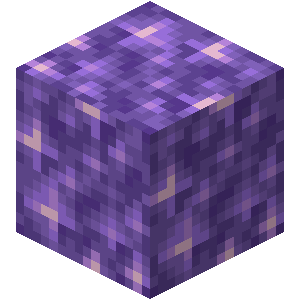
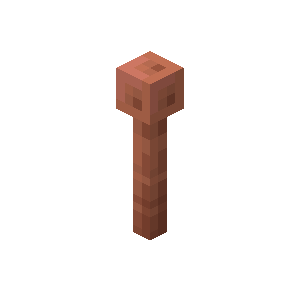










 Getting Started
Getting Started Items
Items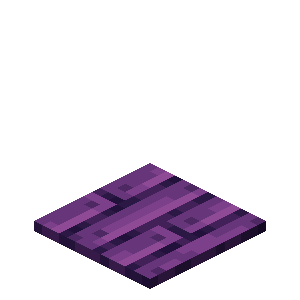

 Scarab Beetle
Scarab Beetle
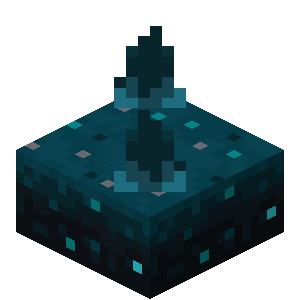
 Animated Scrolls
Animated Scrolls





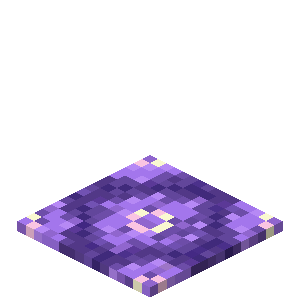 Casting Carpets
Casting Carpets Hex Candles
Hex Candles
 Media Jar
Media Jar


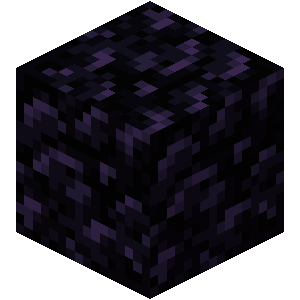





 Media Logs
Media Logs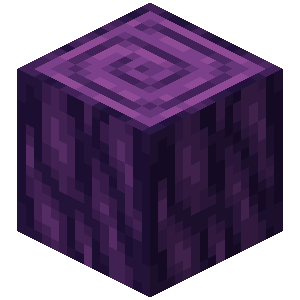
 Lei
Lei

 Plushies
Plushies




 Potions of Wooleyeing
Potions of Wooleyeing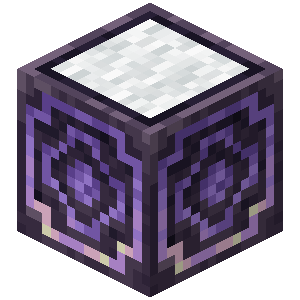 Sentinel Beds
Sentinel Beds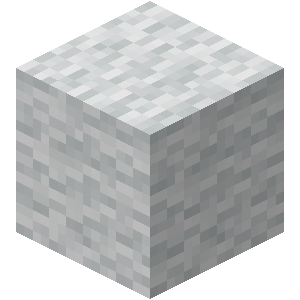

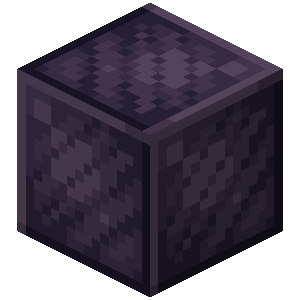
 Curios
Curios















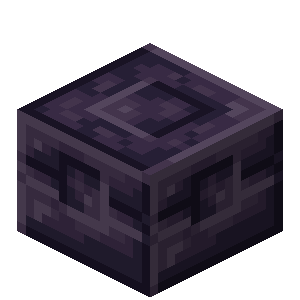 Pedestals
Pedestals

 Genie Lamp
Genie Lamp On Genies
On Genies Archgenie Lamps
Archgenie Lamps The Great Work
The Great Work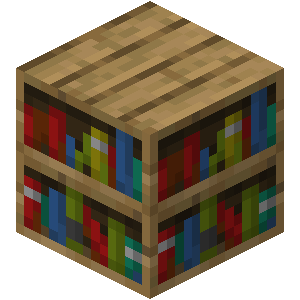 Patterns
Patterns Pattern Manipulation
Pattern Manipulation Grok
Grok Telepathy
Telepathy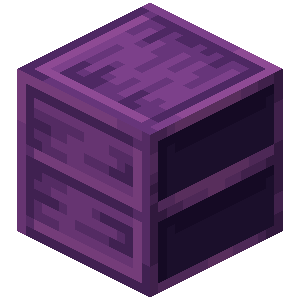 Akashic Utilities
Akashic Utilities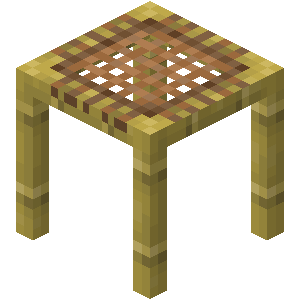 Mage Blocks
Mage Blocks Dyes
Dyes Magic Missile
Magic Missile Prestidigitation
Prestidigitation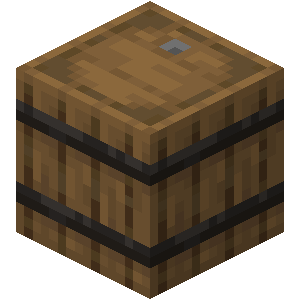 Wristpocket
Wristpocket Conjure Flora
Conjure Flora






































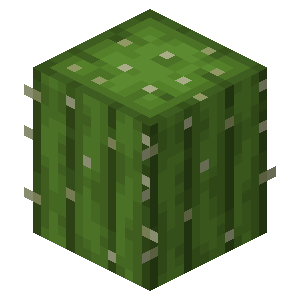
 Hexical Spells
Hexical Spells Projectiles
Projectiles Specialized Breaking
Specialized Breaking Conjurable Delights
Conjurable Delights Conjure Spike
Conjure Spike Block Mimicry
Block Mimicry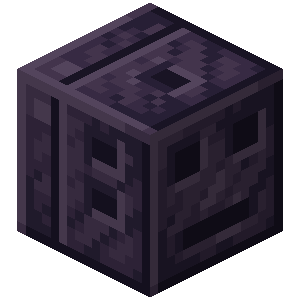 Circle Spells
Circle Spells Evocation
Evocation Hotbar
Hotbar Item Renaming
Item Renaming Pyrotechnics
Pyrotechnics Shaders
Shaders Great Spells
Great Spells Greater Blink
Greater Blink Meshes
Meshes